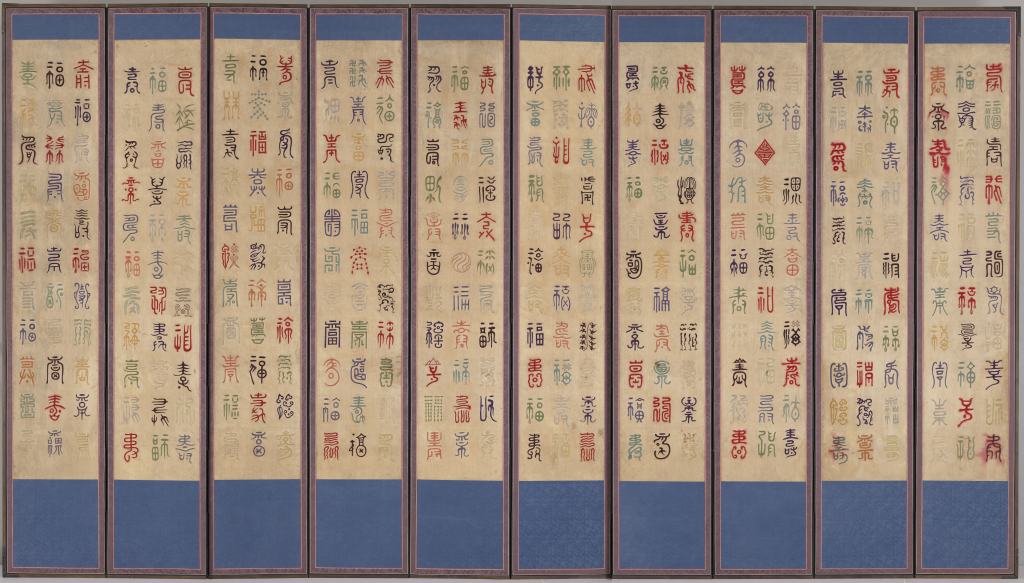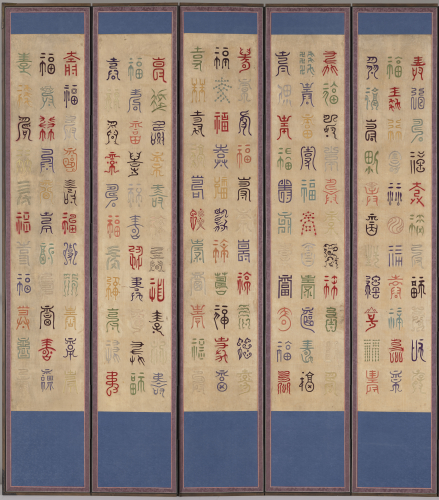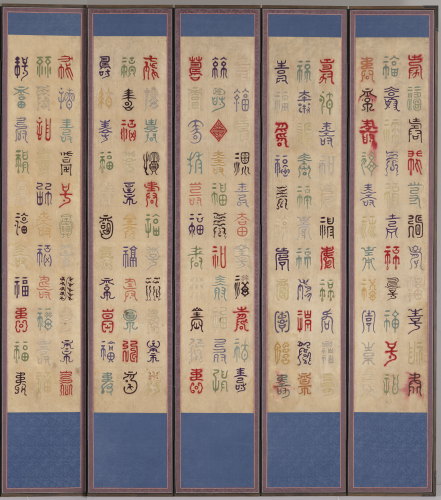Subok Screen: Characters for Longevity and Good Fortune in Various Scripts

Royal Embroidery Workshop of the Joseon Dynasty, Seoul, Korea, Subok Screen: Characters for Longevity and Good Fortune in Various Scripts, 19th century, ten-panel screen; silk floss embroidery on silk ground, Partial gift of The Robert and Sandra Mattielli Collection, and partial purchase, with funds provided by the Margery Hoffman Smith Fund, Jerry Lamb, Virginia Nelson, Travers Hill Polak, Erick Schiess, and others, public domain, 2010.33


This work is not currently on view.
- Title
Subok Screen: Characters for Longevity and Good Fortune in Various Scripts
- Related Titles
original language: 壽福文字圖刺繡屛風
original language: 수복문자도 자수병풍
- Artist
attributed to Royal Embroidery Workshop of the Joseon Dynasty, Seoul, Korea (Korea)
- Date
19th century
- Period
Korea: Joseon Dynasty (1392-1910)
- Medium
ten-panel screen; silk floss embroidery on silk ground
- Dimensions (H x W x D)
82 1/4 in x 140 in
- Collection Area
Asian Art
- Category
Decorative Art
Calligraphy
- Object Type
folding screen
- Culture
Korean
- Credit Line
Partial gift of The Robert and Sandra Mattielli Collection, and partial purchase, with funds provided by the Margery Hoffman Smith Fund, Jerry Lamb, Virginia Nelson, Travers Hill Polak, Erick Schiess, and others
- Accession Number
2010.33
- Copyright
public domain
- Terms
- Place Made
Created in: Seoul
The entire composition of this screen consists of variations on the Chinese characters for longevity (壽, su) and good fortune (福, bok), arranged in alternating horizontal and vertical rows. The characters are written with astonishing variety, drawing on a repertoire of archaic scripts used in China as far back as the fifteenth century BCE. Making witty reference to the pictographic origin of Chinese writing, some of the symbols incorporate stylized drawings of fish, birds, plants, or constellations. Korea adopted the Chinese language and writing system for formal purposes, such as religious and official documents, as early as the third century. Literary Chinese remained the principal language of the Korea's male scholarly elite until well into the twentieth century. The characters su and bok, however, were frequently used as auspicious design motifs in interior furnishings and clothing and would have been recognized by women as well as men.
The characters for this screen were no doubt brushed out on paper by an eminent male scholar, but the work of recreating the design in embroidery was done by women. This antiquarian flavor of the screen once lent an air of dignity and learning to an elegant Korean home.
- Exhibitions
2016 Five Buddhas: A Korean Icon's Journey Through Time Portland Art Museum









